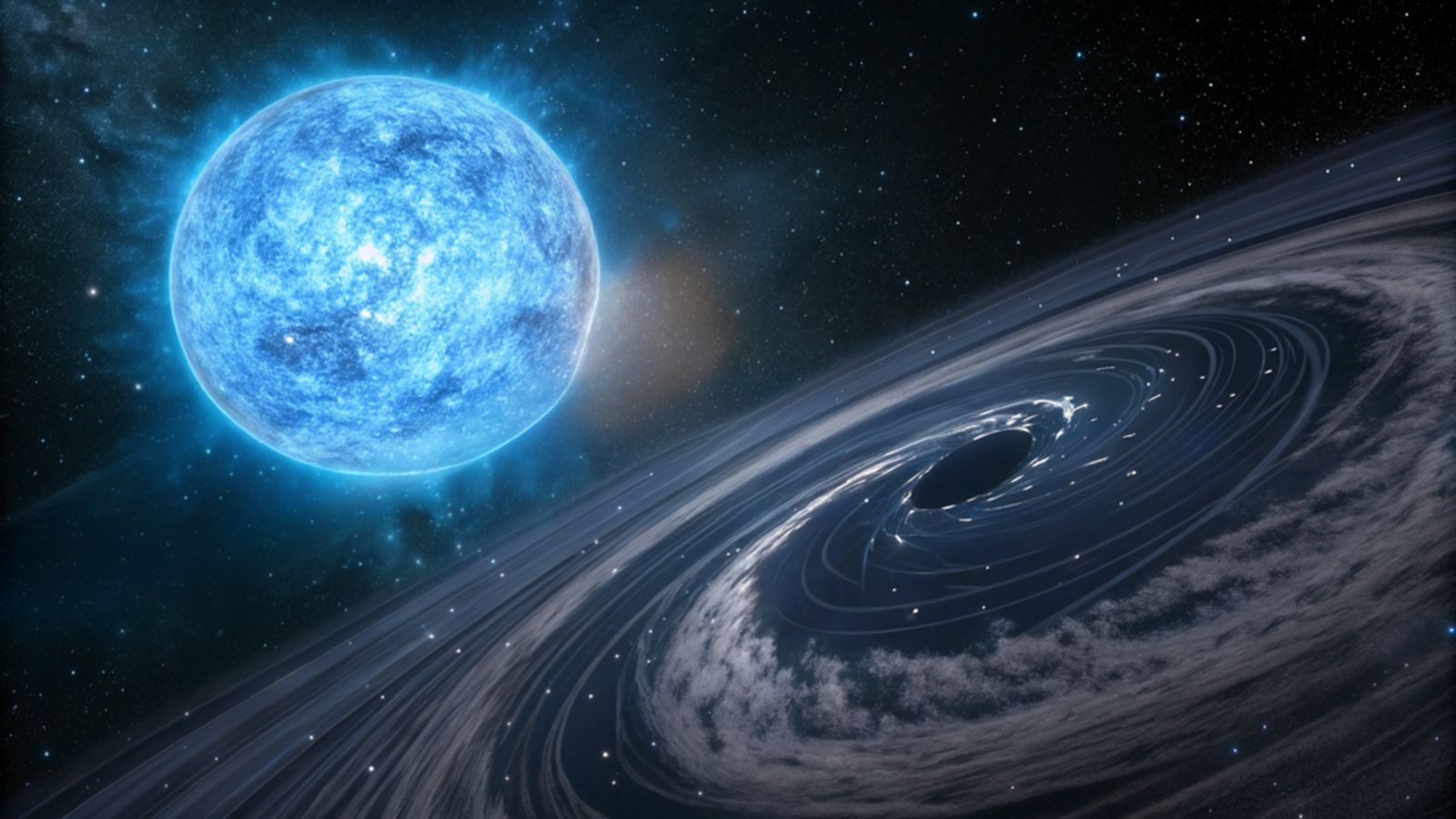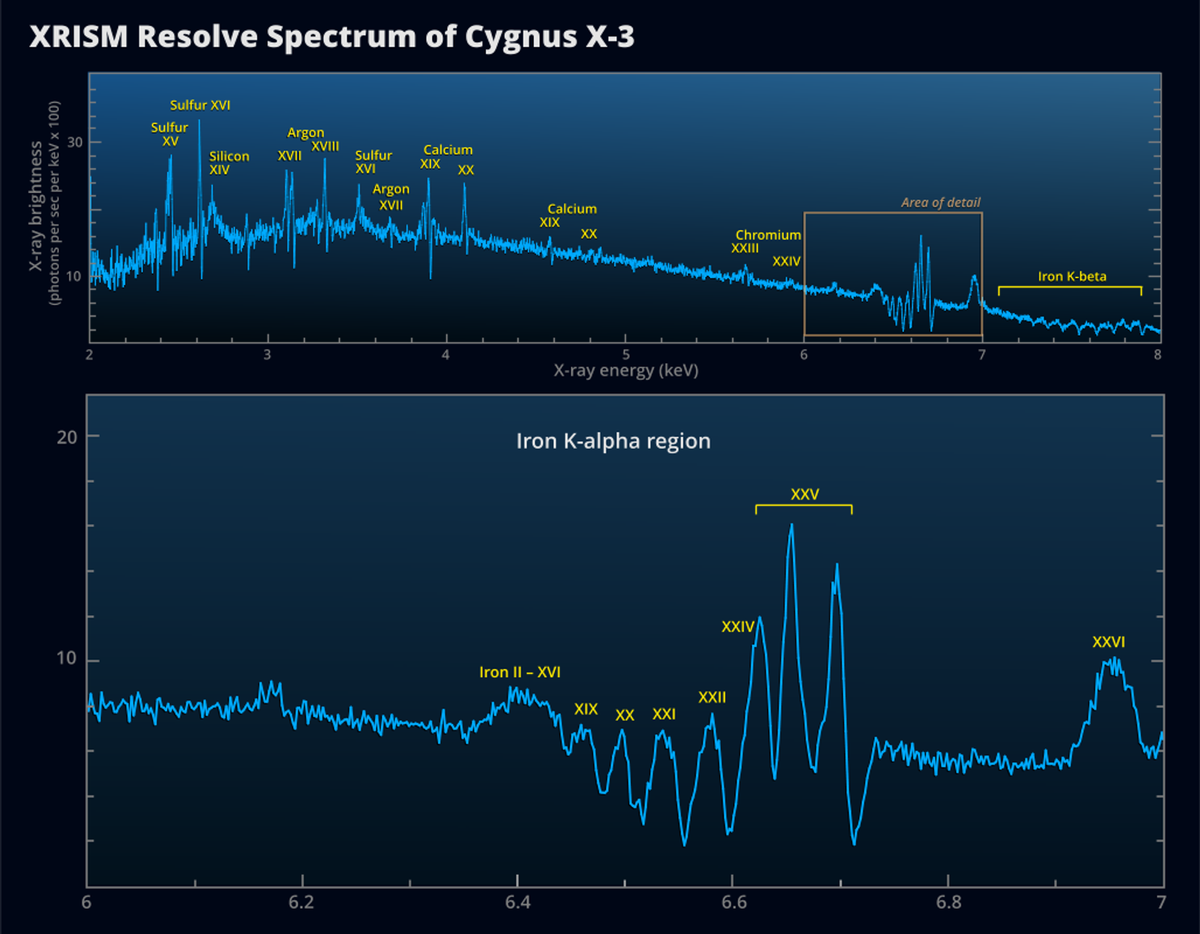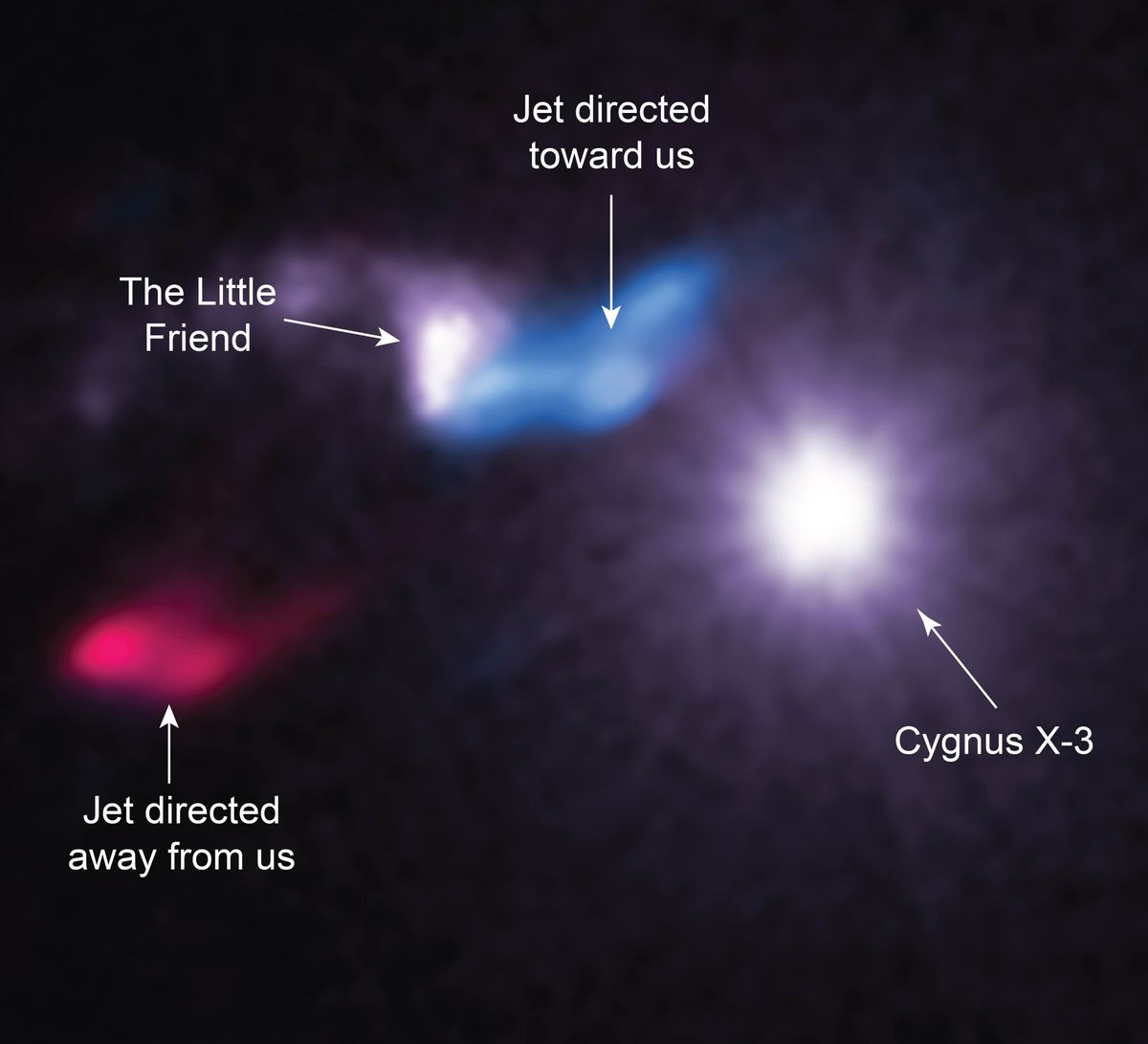Follow us on Google News (click on ☆)

The constellation Cygnus is home to this pair where the star, a Wolf-Rayet, expels stellar winds with extraordinary intensity. XRISM, led by Japan with support from NASA, observed these gas flows for 18 hours, creating an unprecedented map of this energetic activity.
The two celestial bodies orbit so close to one another that they complete their orbit in less than five hours. This proximity triggers energetic phenomena: gases ejected from the star are heated and ionized, emitting X-rays detectable despite the dust clouds of the Milky Way.
Cygnus X-3 is particularly known for the ultrafast winds generated by its star, which blow at 932,000 mph (1,500,000 km/h). These flows exceed the speed of sound on Earth by a factor of a thousand, creating turbulence around the presumed black hole.
Spectral observations reveal that most of the gas is heading toward Earth, confirming its extreme velocity. This "blueshift" phenomenon contrasts with a smaller fraction of gas moving away more slowly, highlighting the complexity of the gravitational interaction between the two bodies.

X-ray spectrum captured by XRISM telescope's Resolve instrument. The red and blue shifts show gas motions.
Credit: JAXA/NASA/XRISM Collaboration
Analysis of the spectral lines shows stronger absorption compared to emission, especially in the case of ionized iron. These clues provide better insight into how the stellar winds interact with the compact object, reinforcing suspicions about its black hole nature.
However, the mystery remains: is it truly a black hole residing in this tumultuous region? Scientists hope that future analyses will resolve this question. An initial study based on this data will soon be published in the Astrophysical Journal.

Representation of the system where a massive star is being "eaten" by a compact companion.
Credit: NASA/CXC/SAO
What is a Wolf-Rayet star?
Wolf-Rayet stars are massive and rare stellar objects that represent an advanced evolutionary stage of the most massive stars in the Universe. These stars, named after French astronomers Charles Wolf and Georges Rayet, are characterized by unique and striking features.
These stars have extremely powerful stellar winds, ejecting significant amounts of gas and matter into space at high velocities. These winds originate from their surface, where thermonuclear reactions release immense energy.
They exhibit distinct luminous spectra, rich in elements such as helium, carbon, and oxygen, but poor in hydrogen. This composition reflects their advanced stage of nuclear fusion, where inner layers become exposed due to mass loss.
Wolf-Rayet stars often end their lives dramatically, exploding as supernovae and sometimes forming a neutron star or a black hole. Their study sheds light on the final stages of massive stars and the chemical enrichment of galaxies.